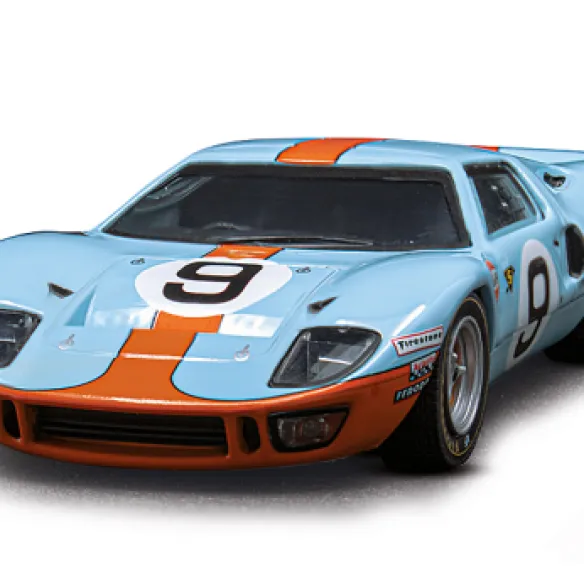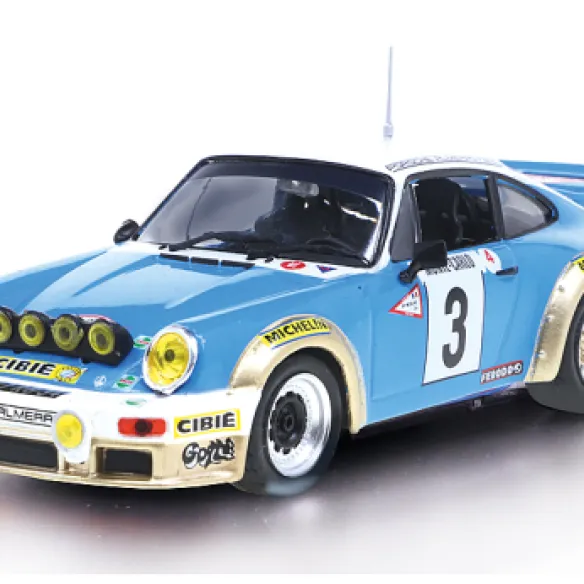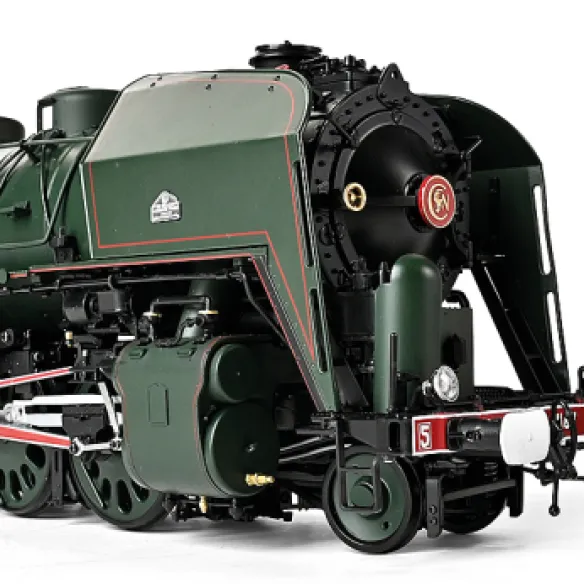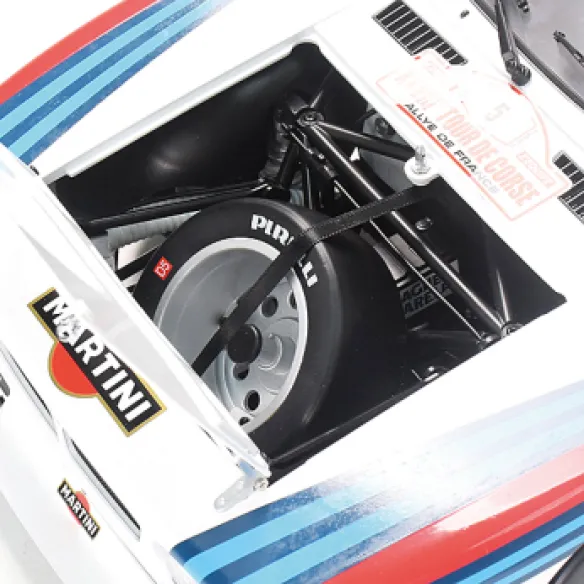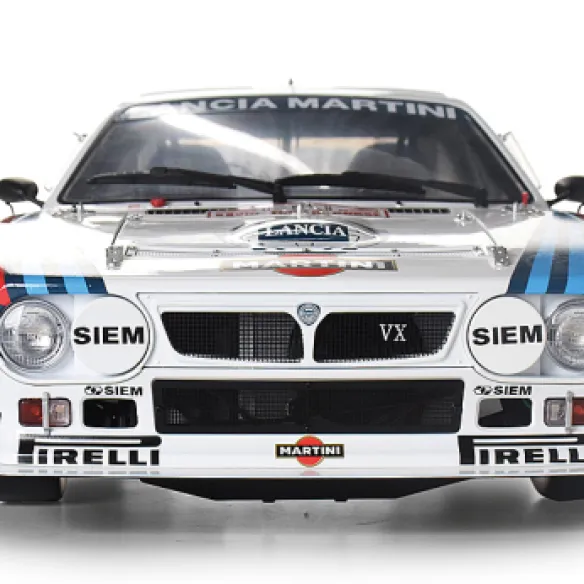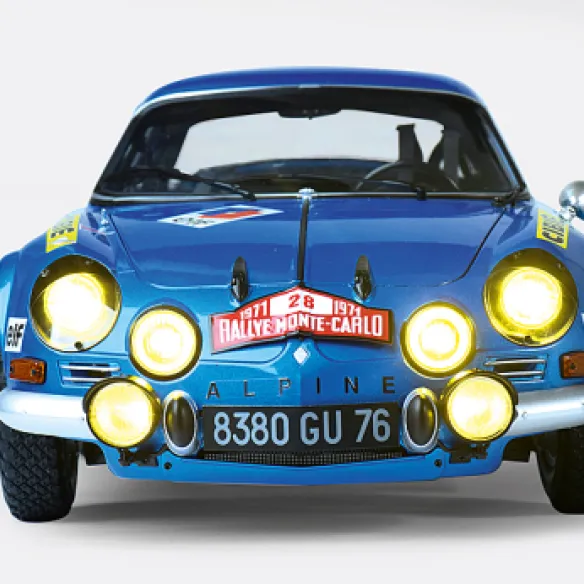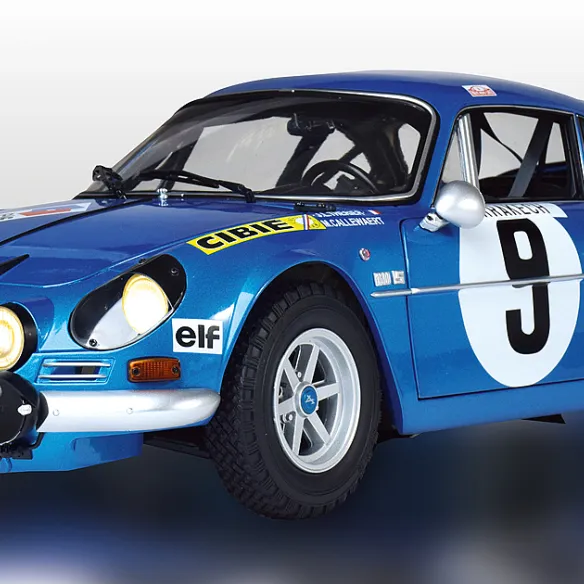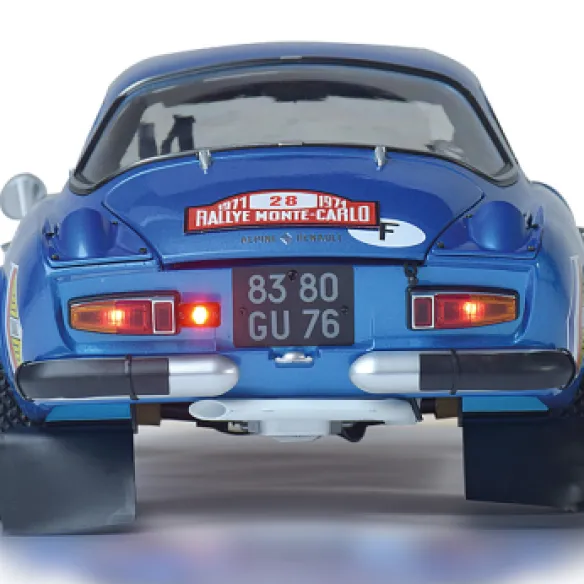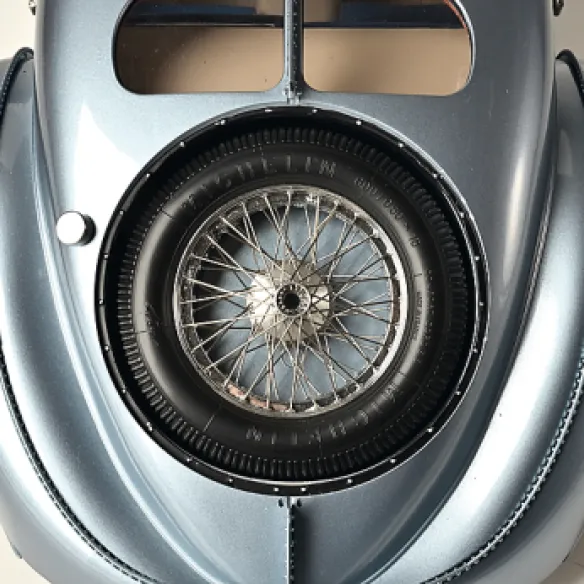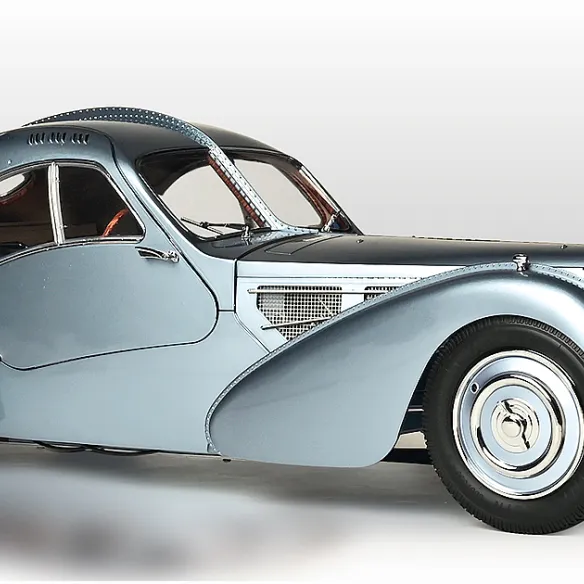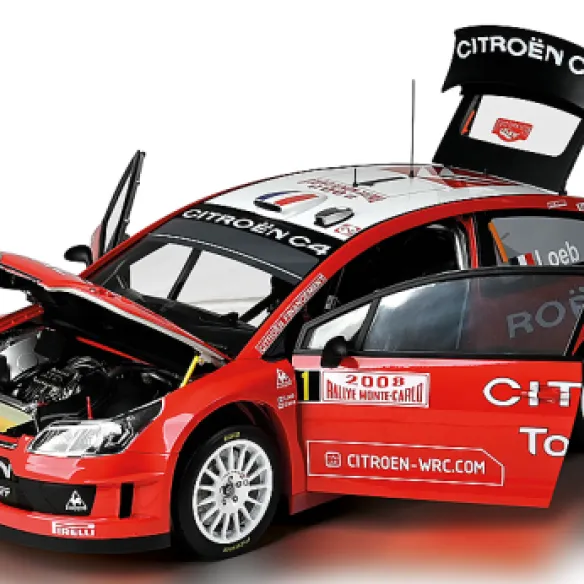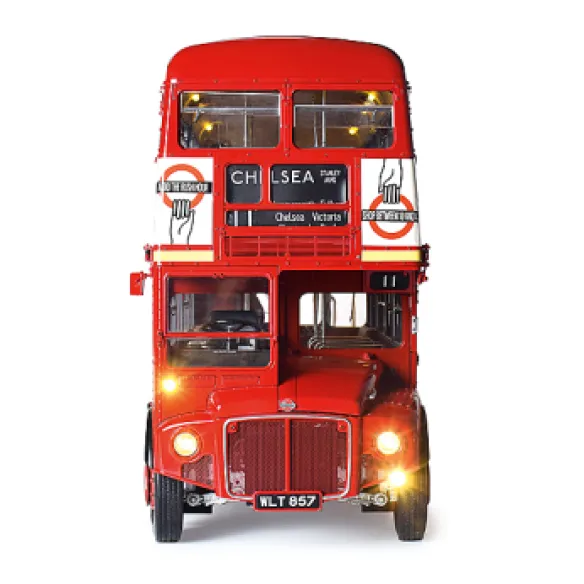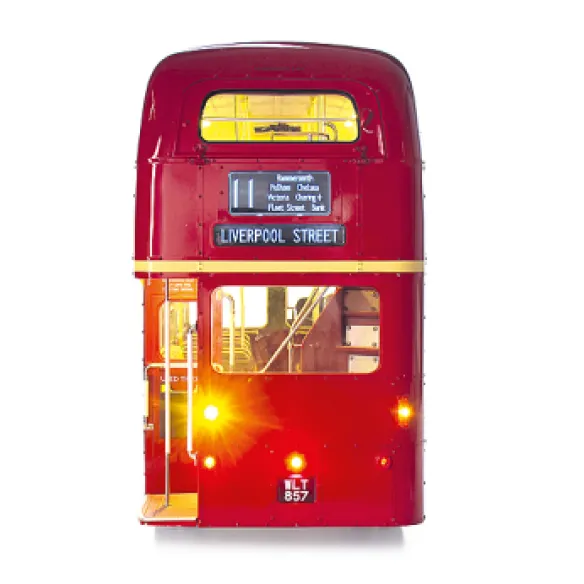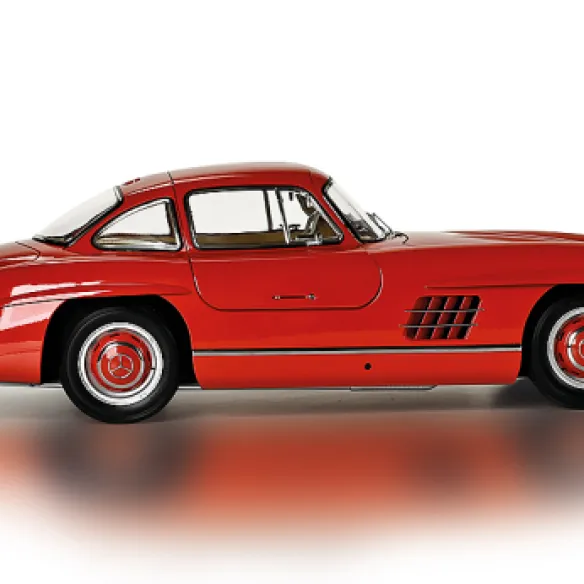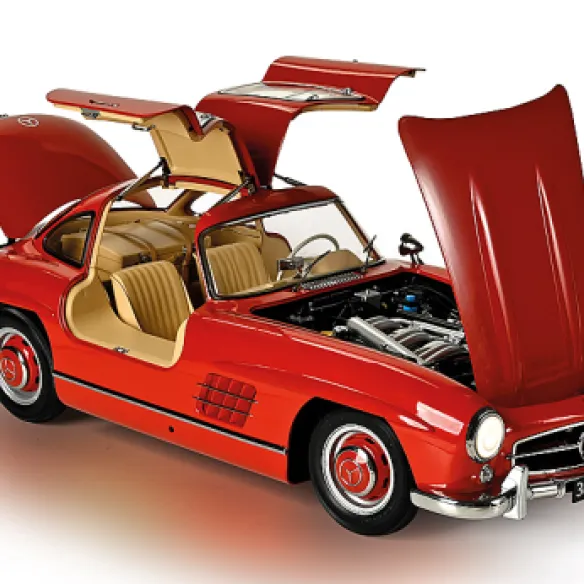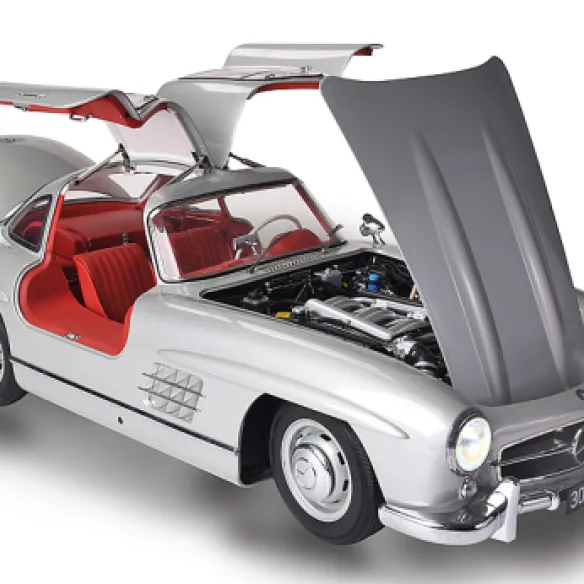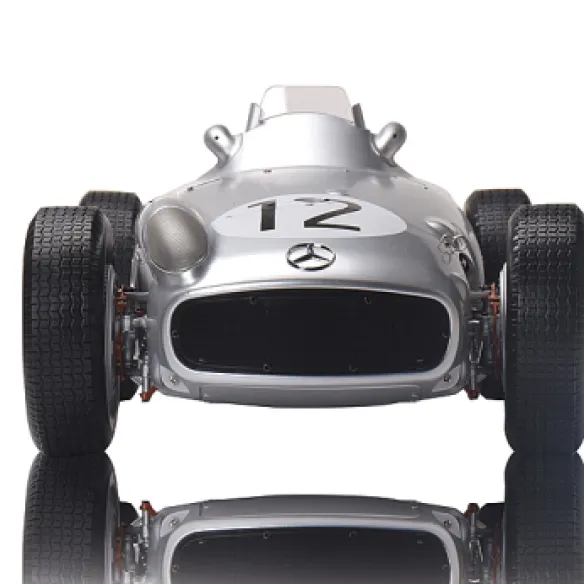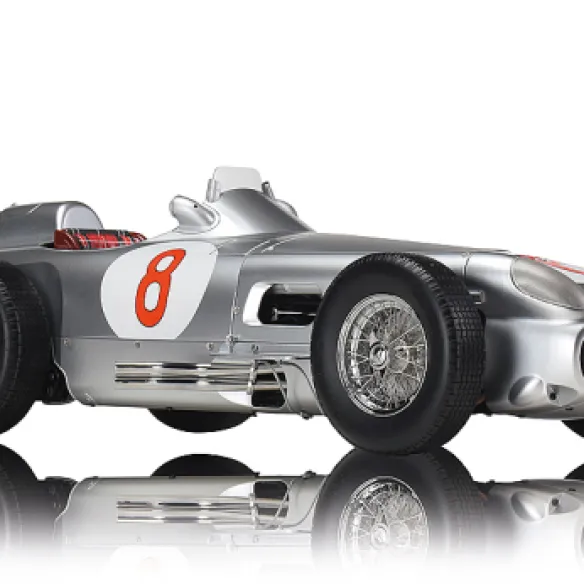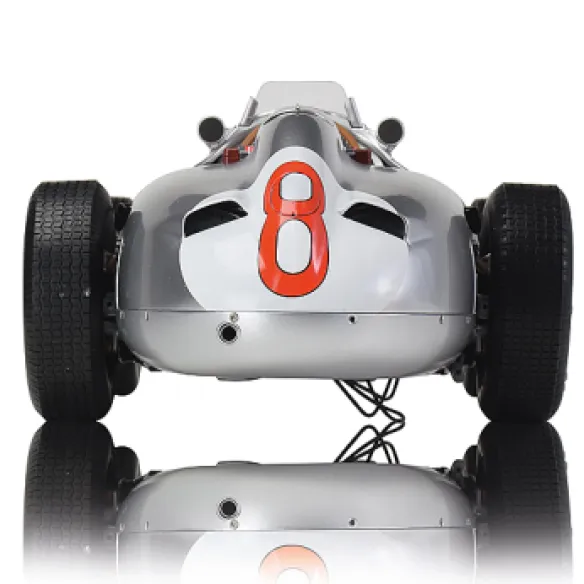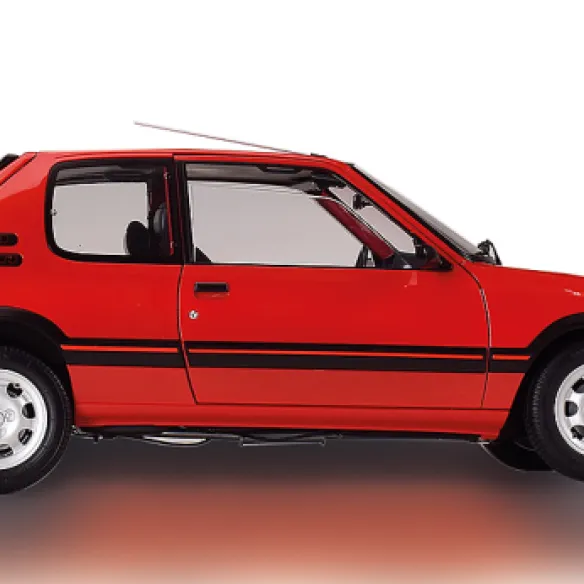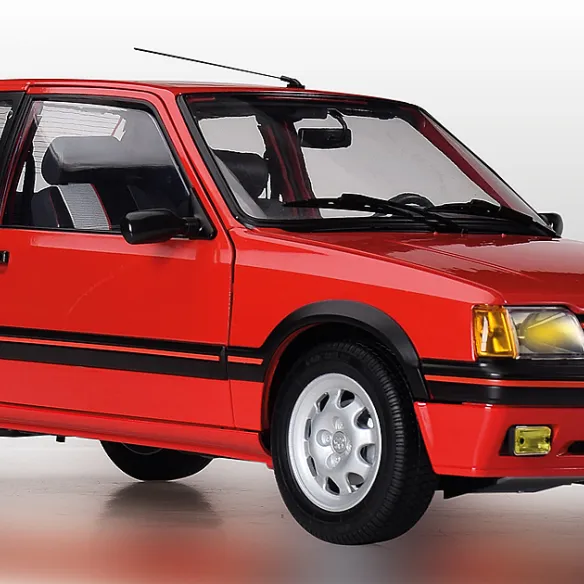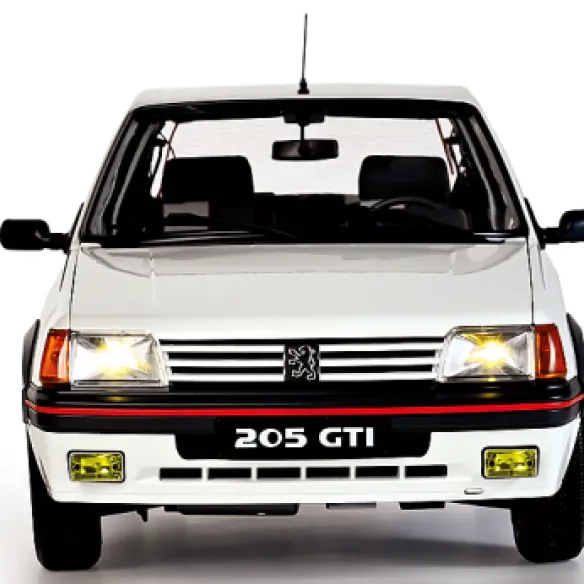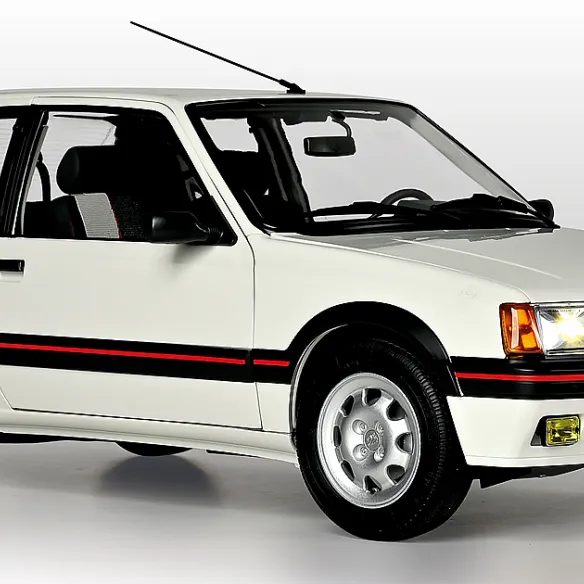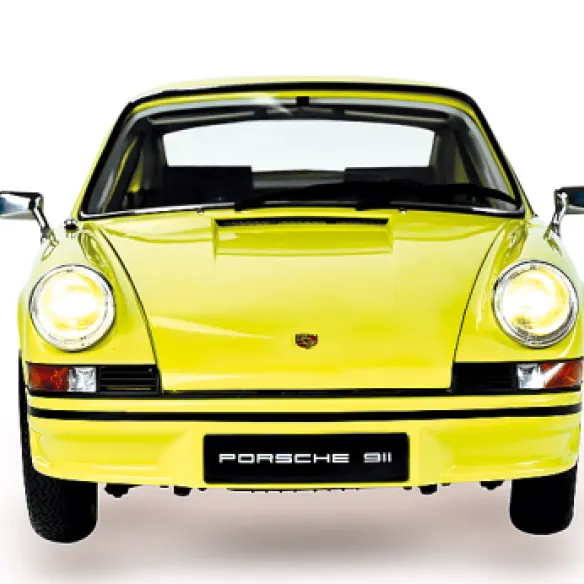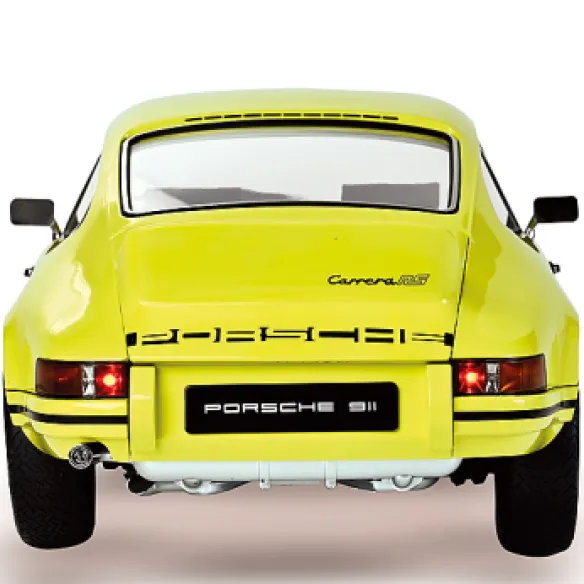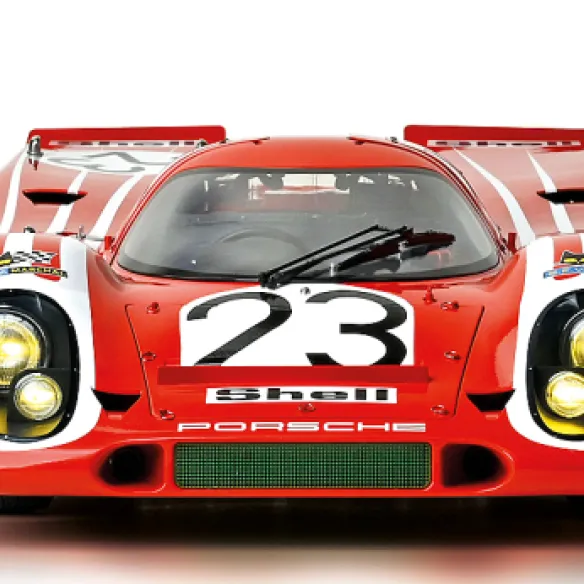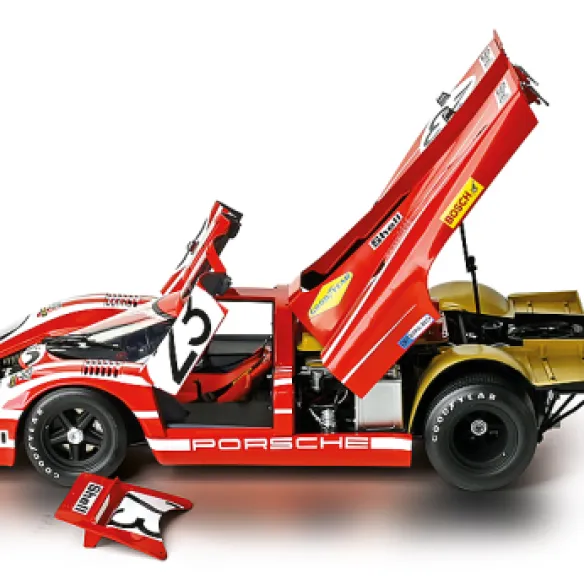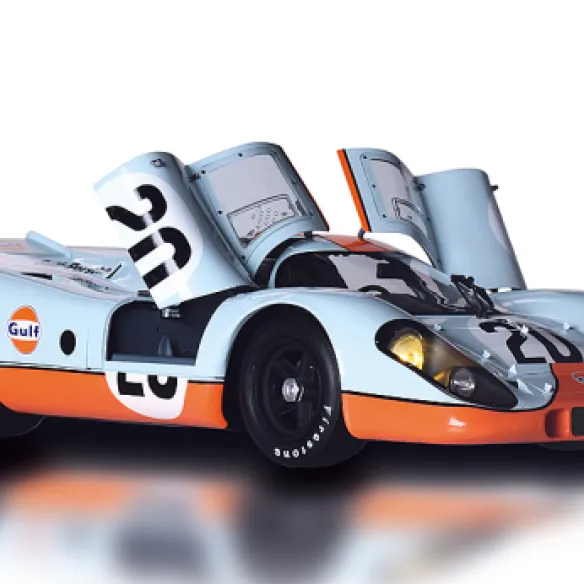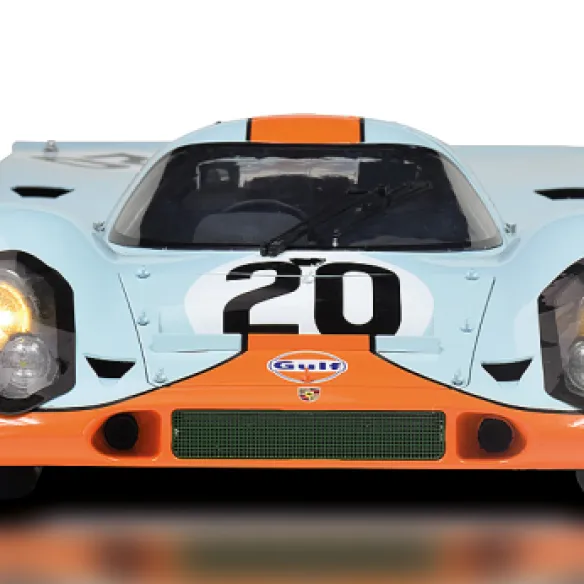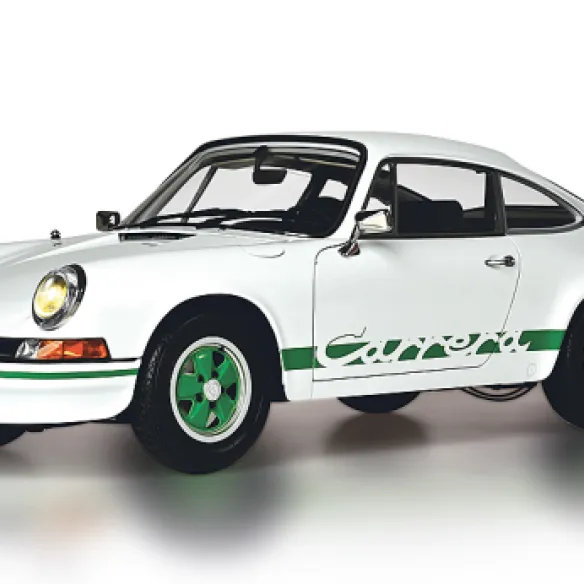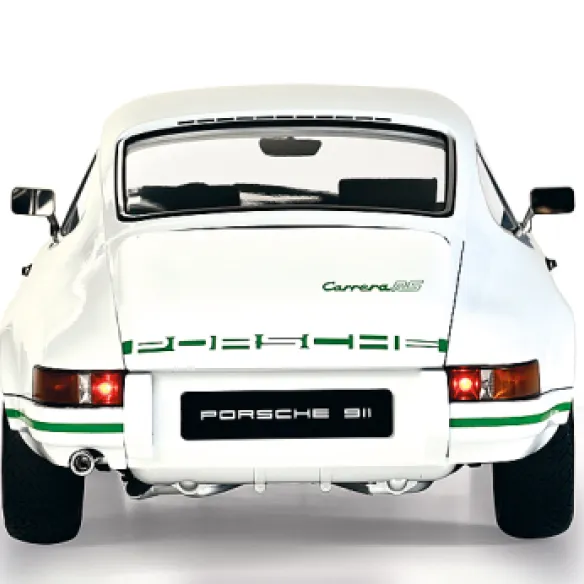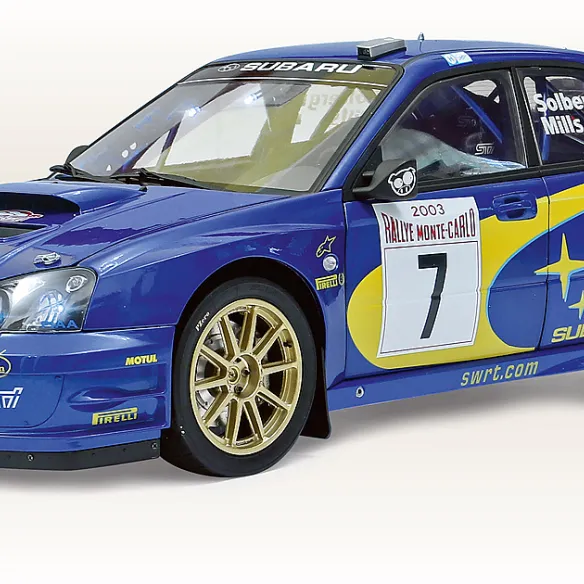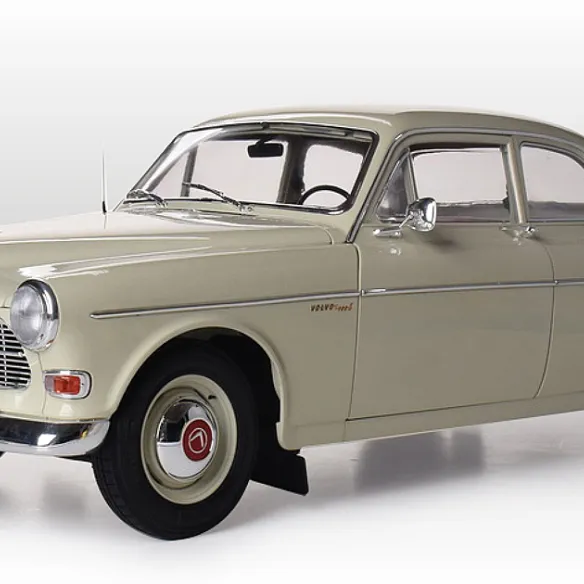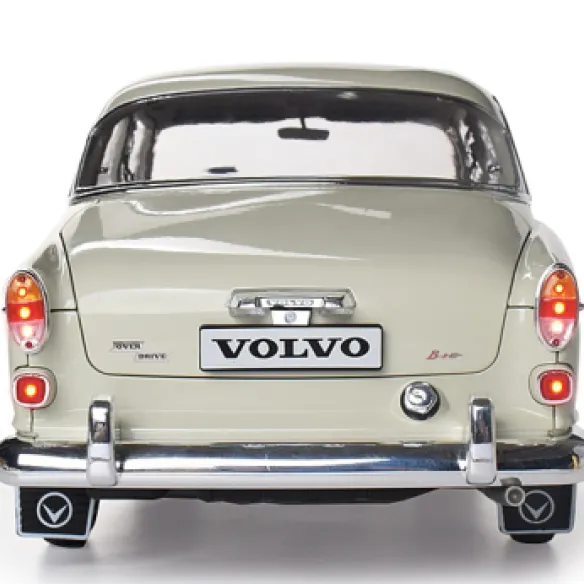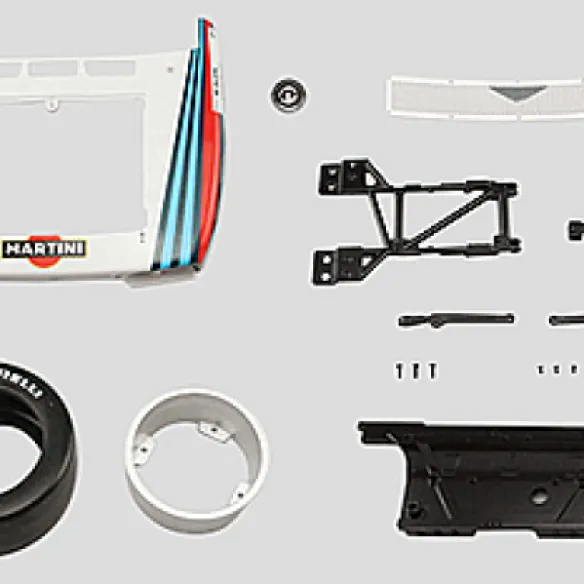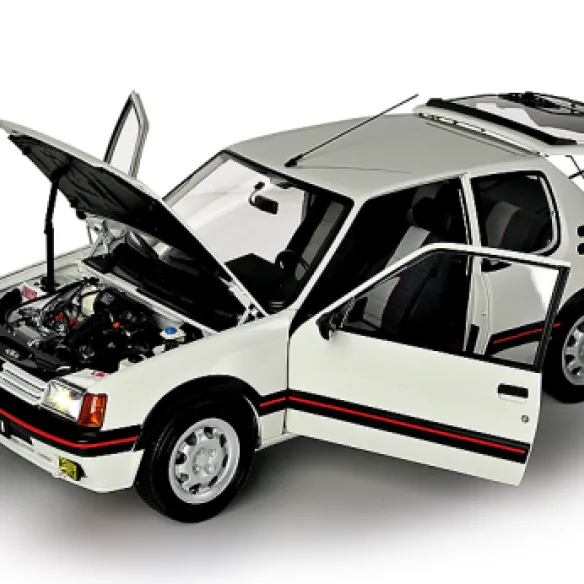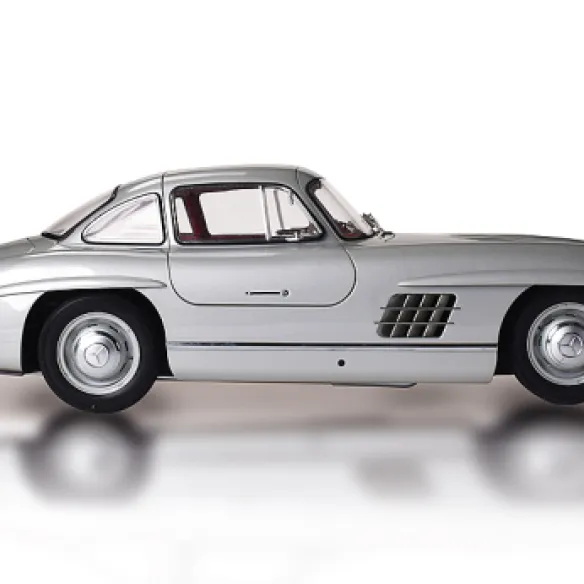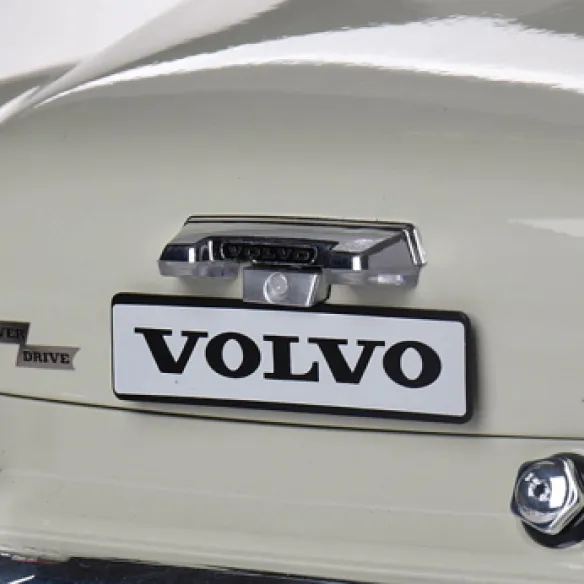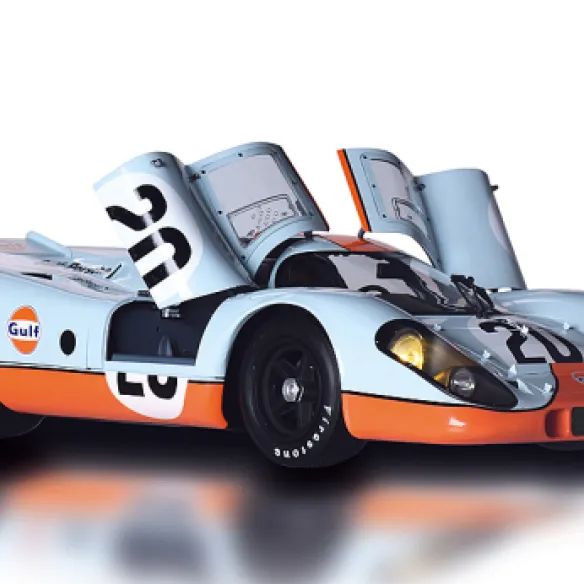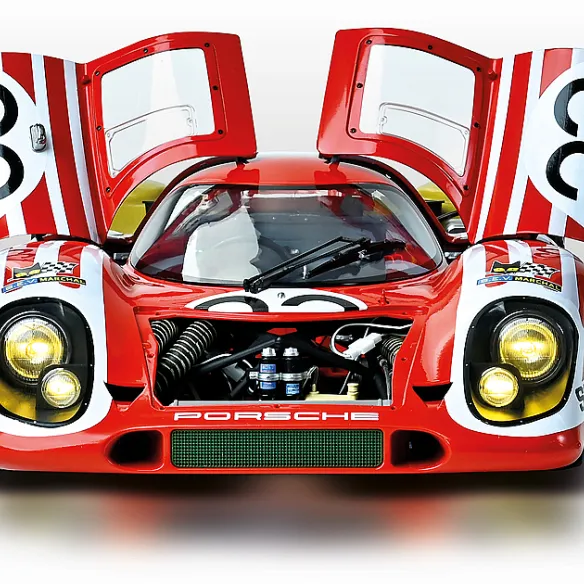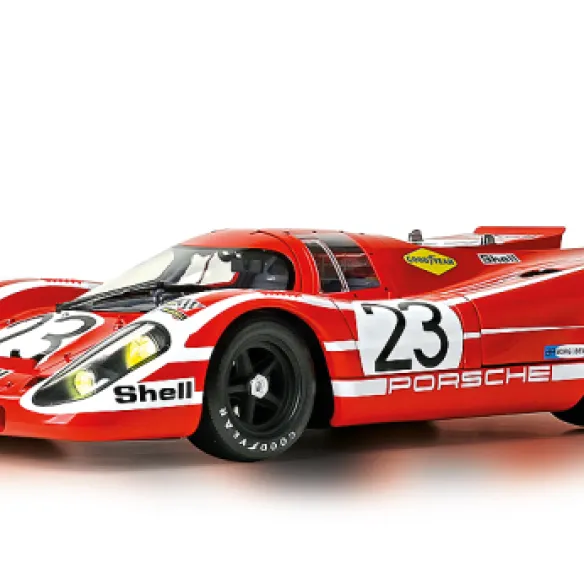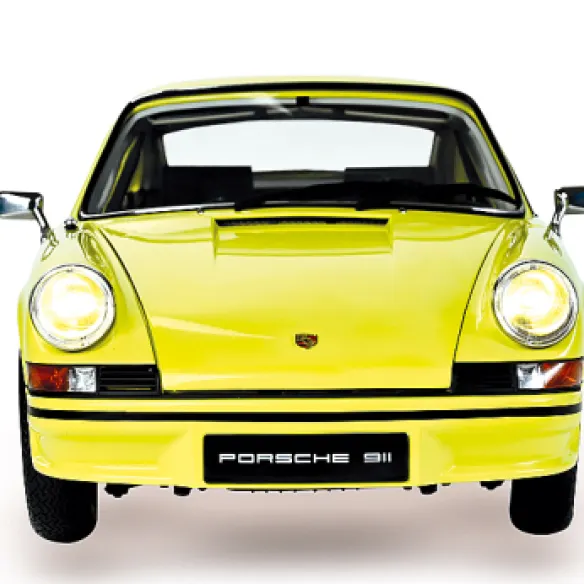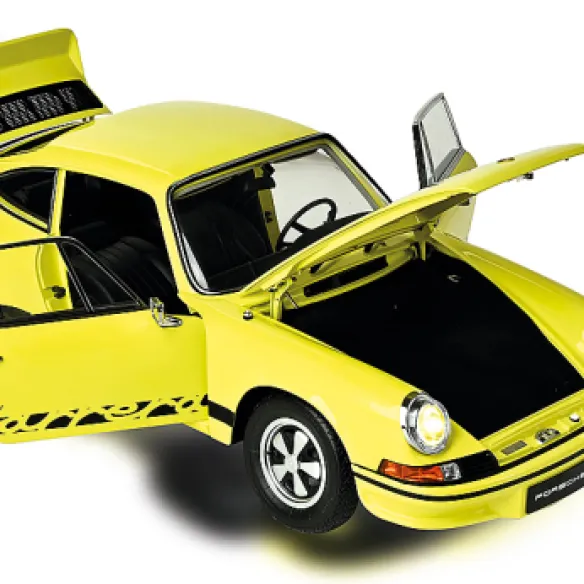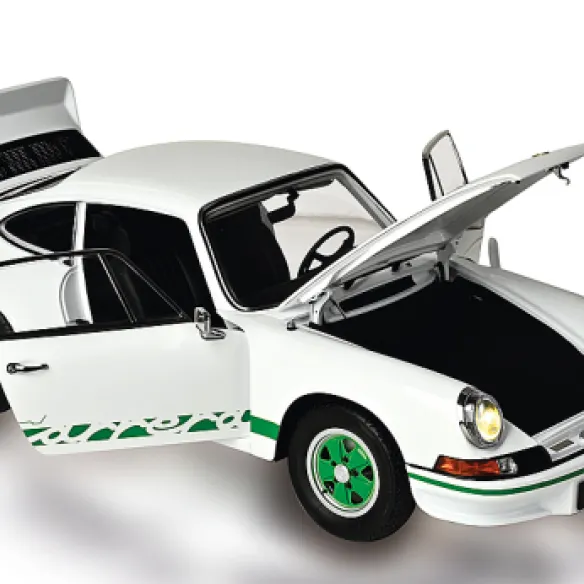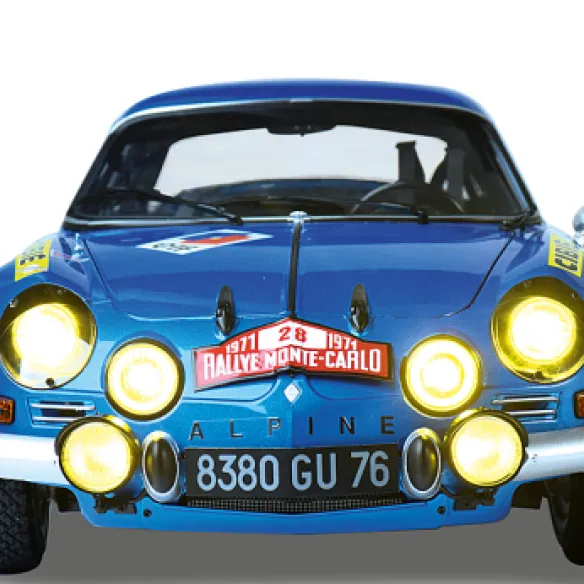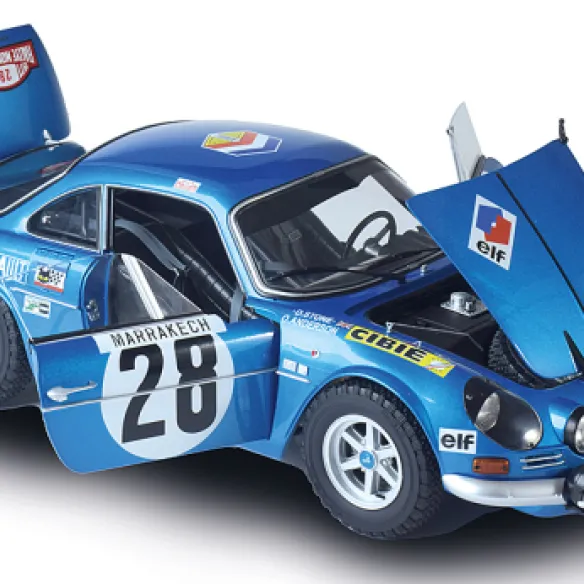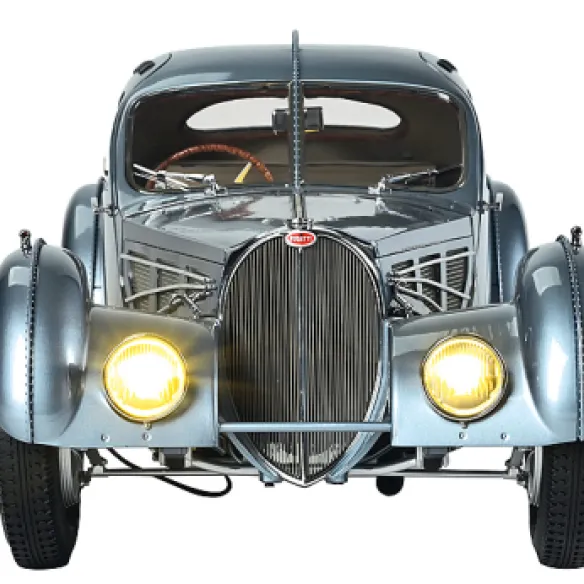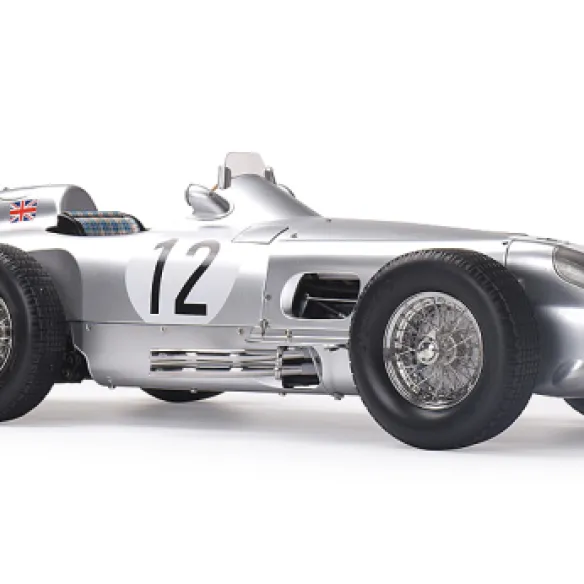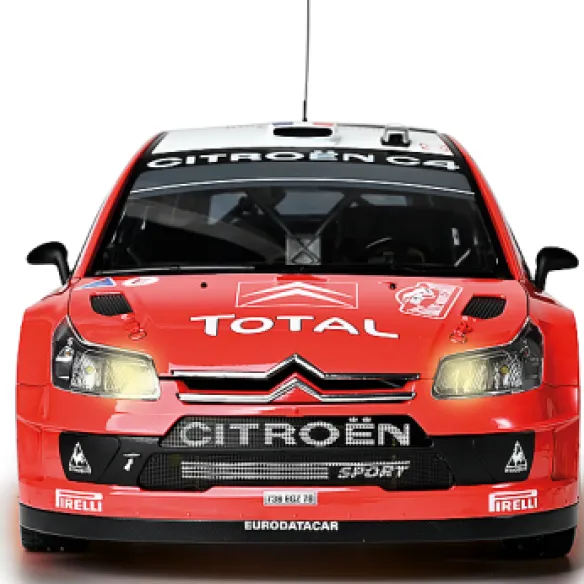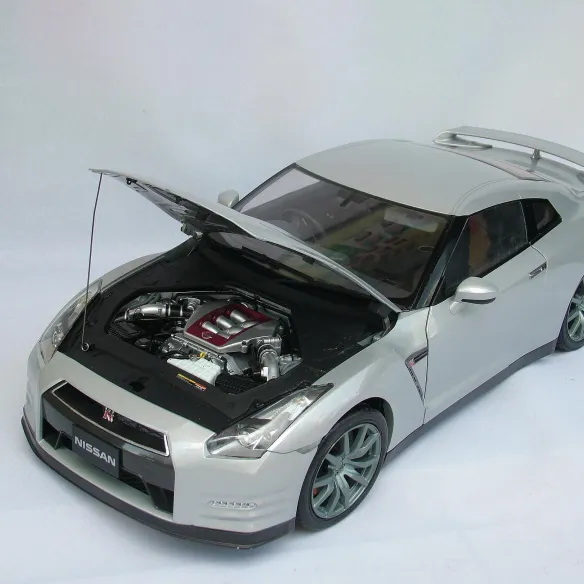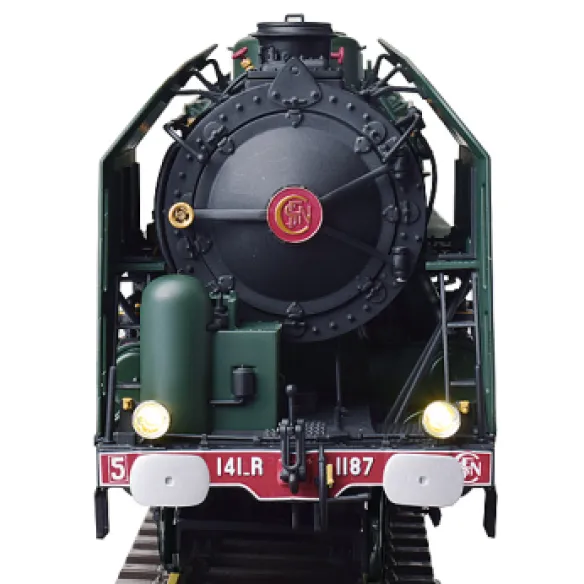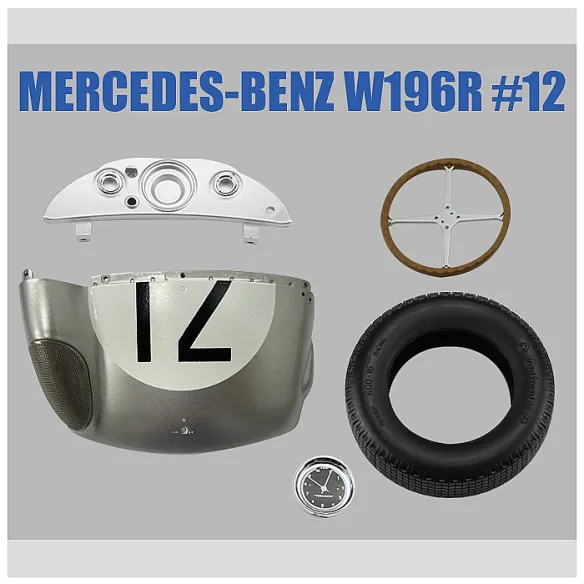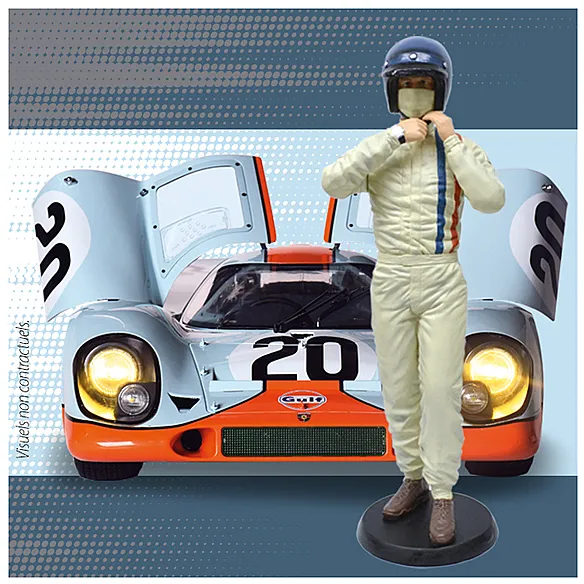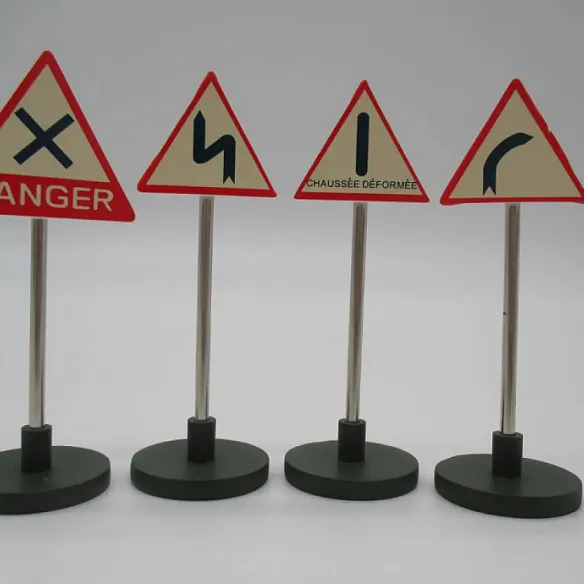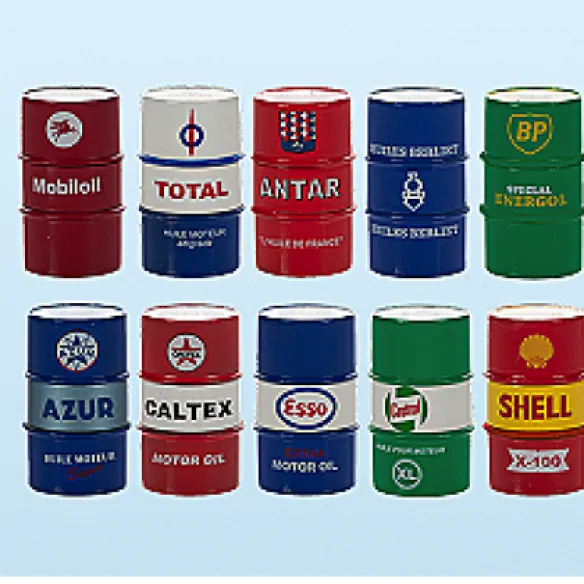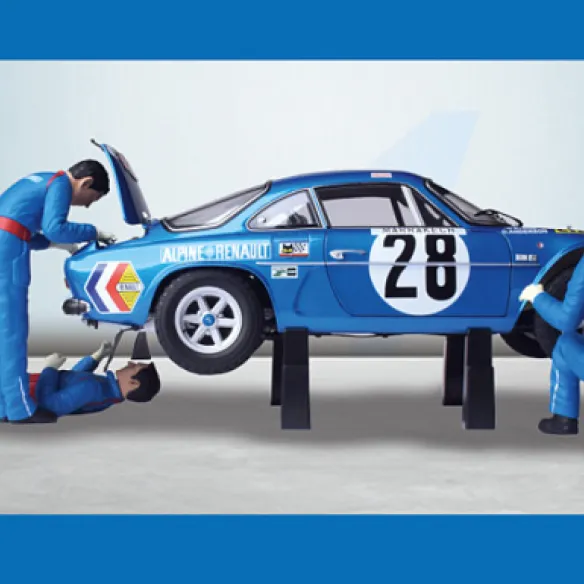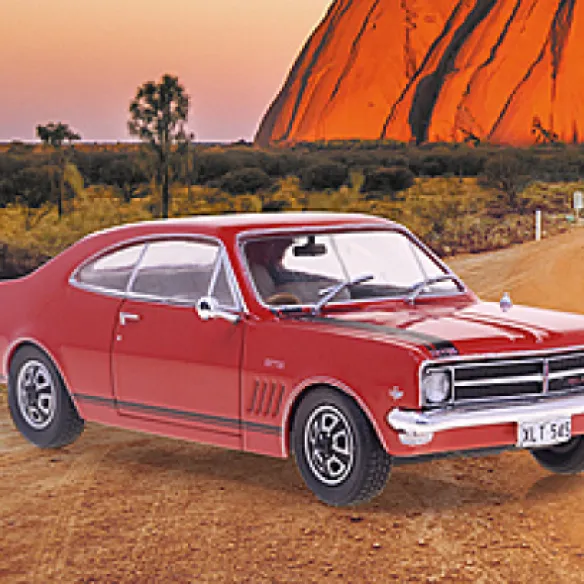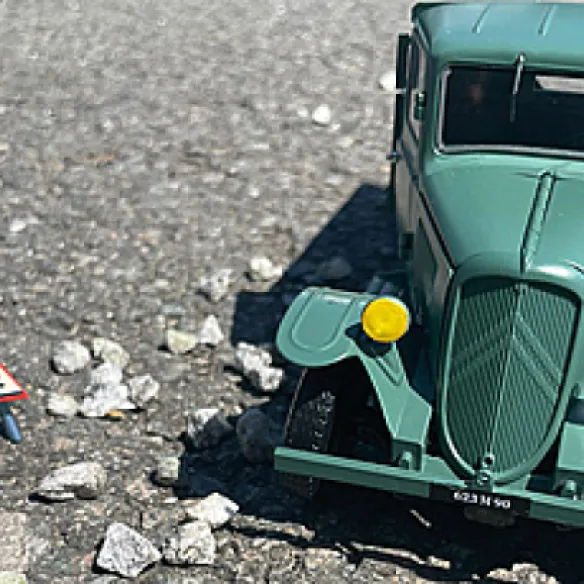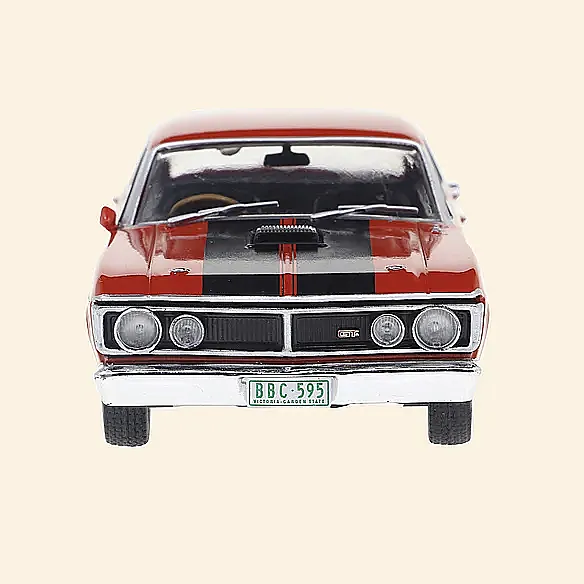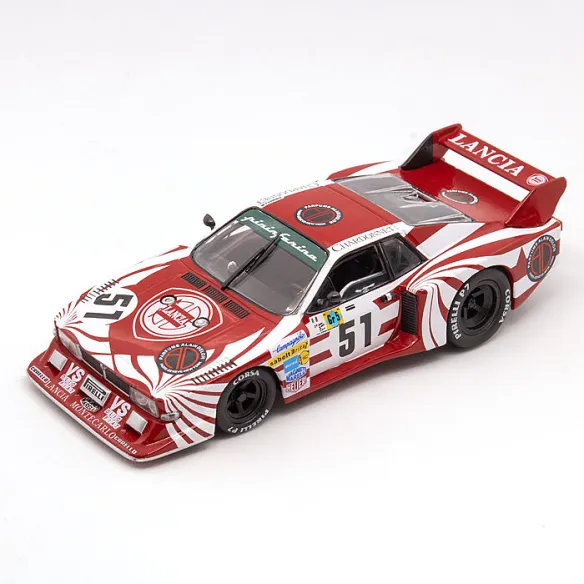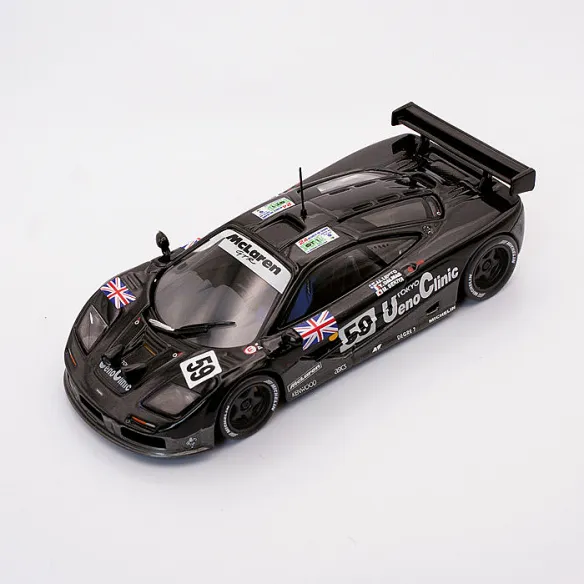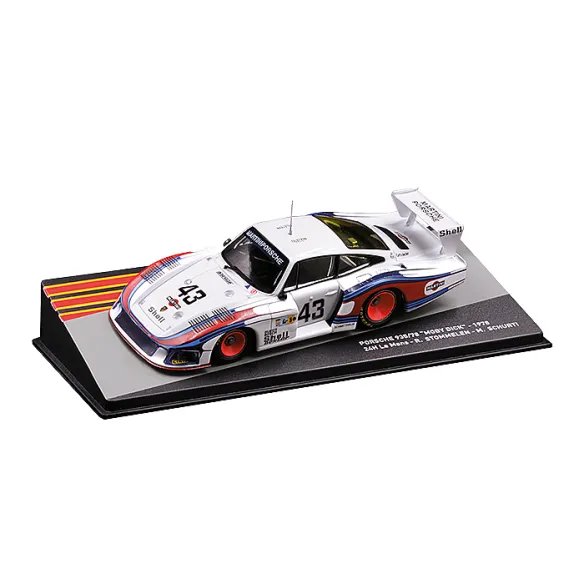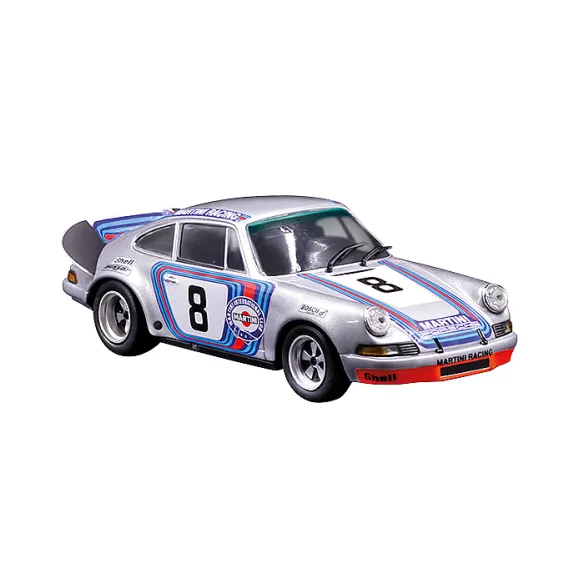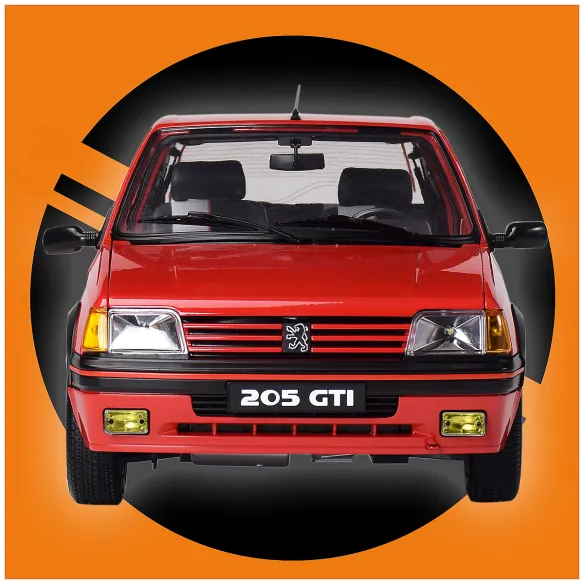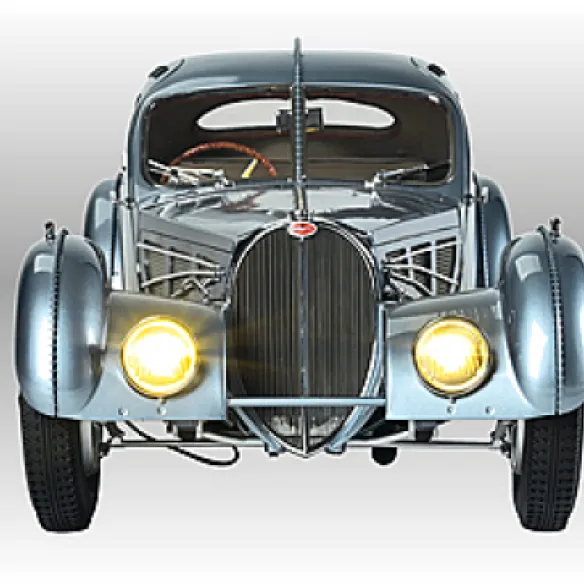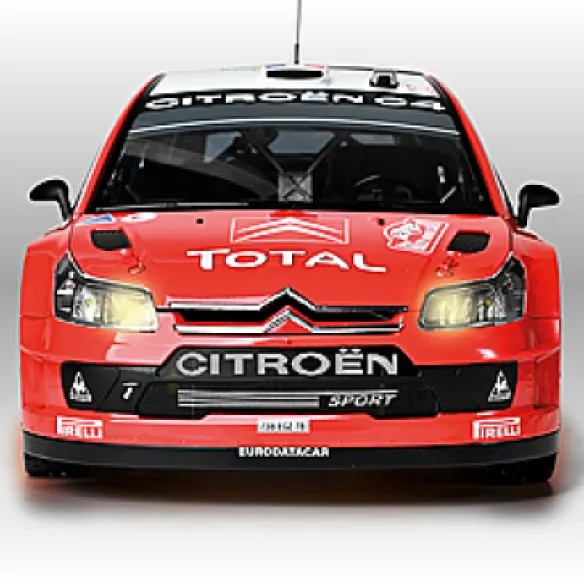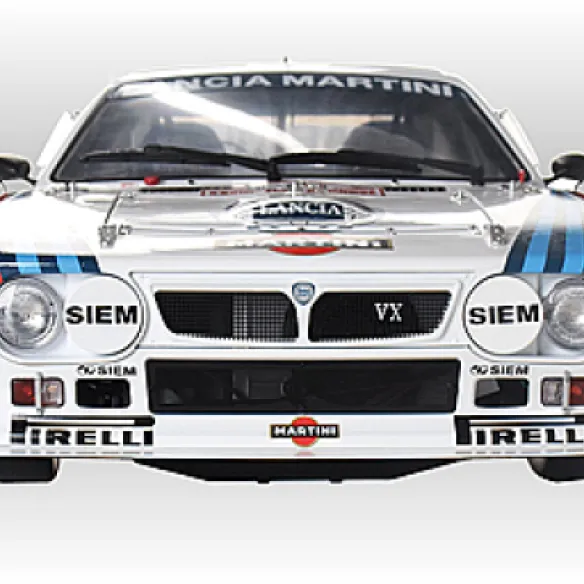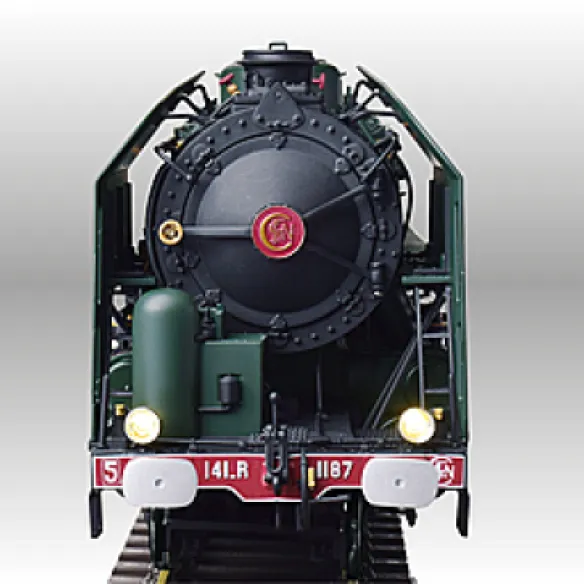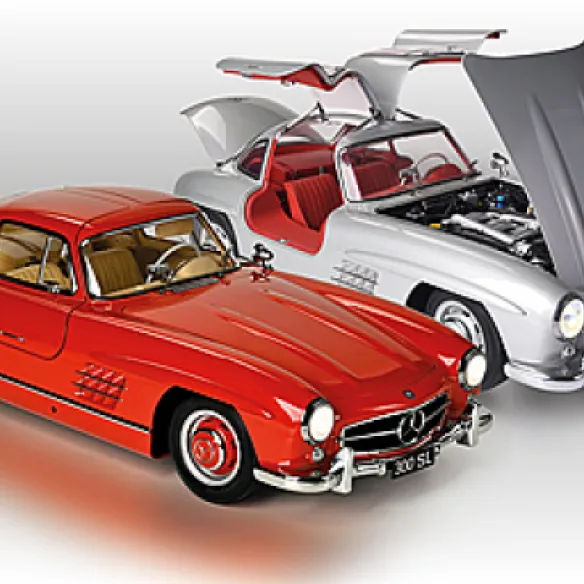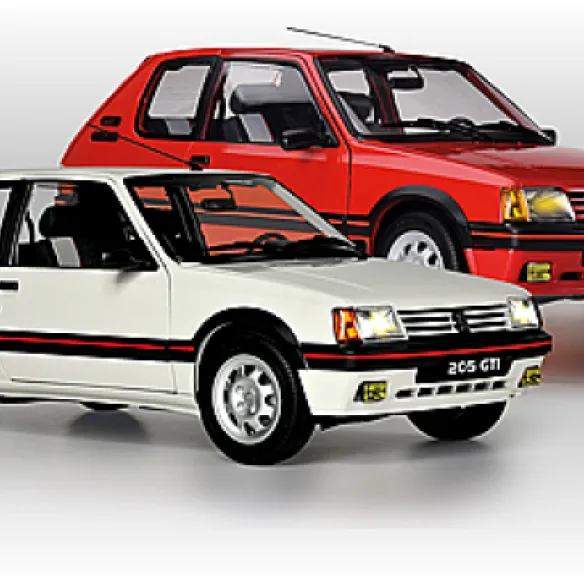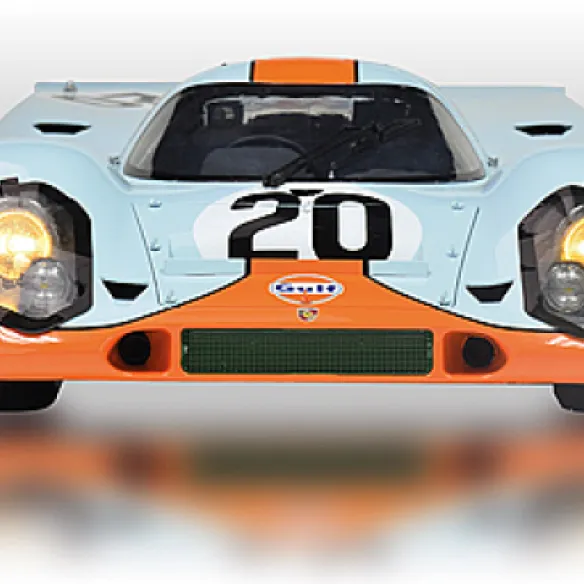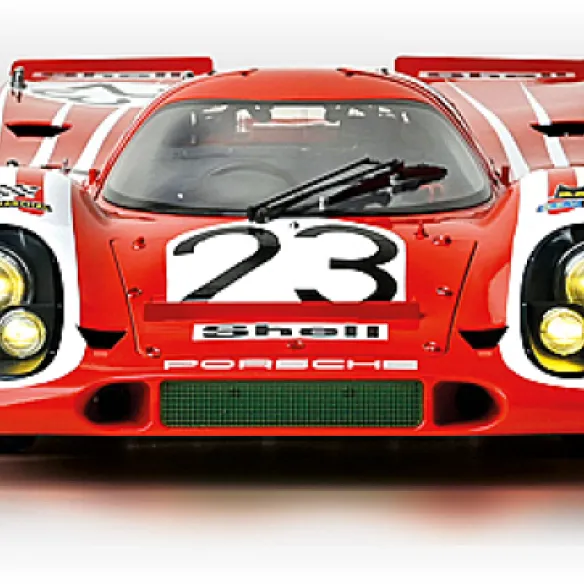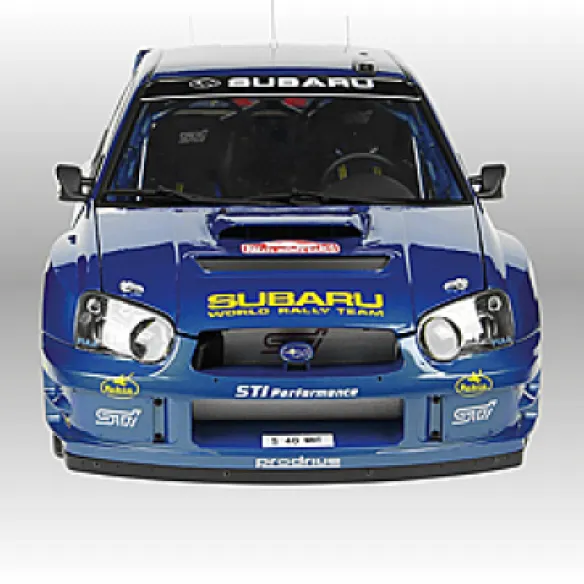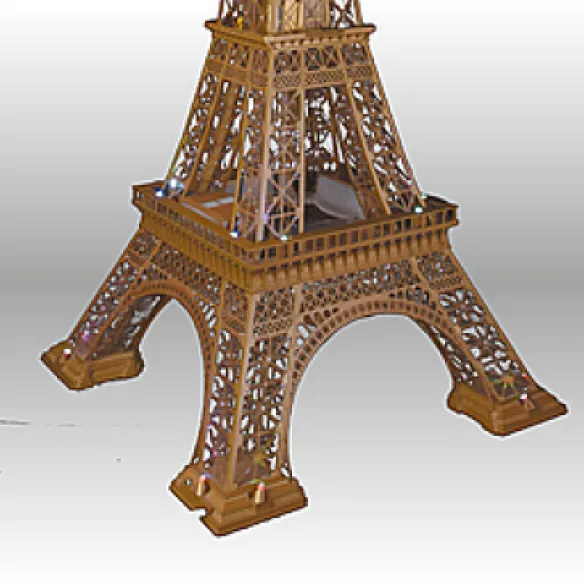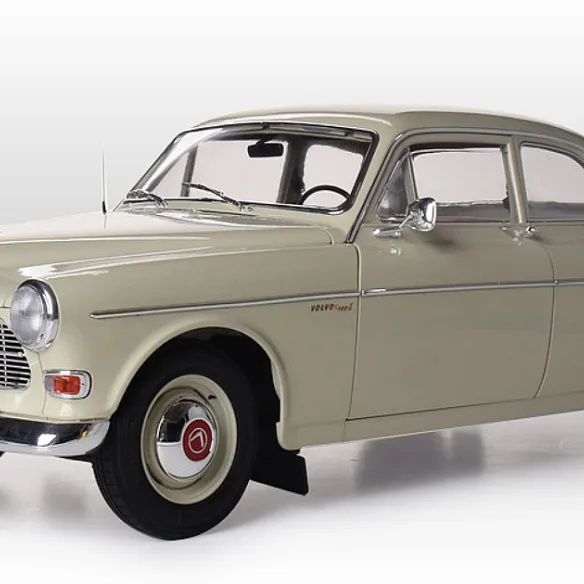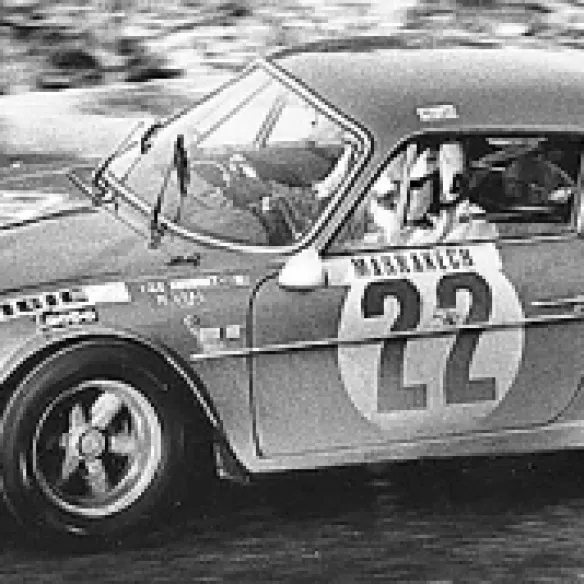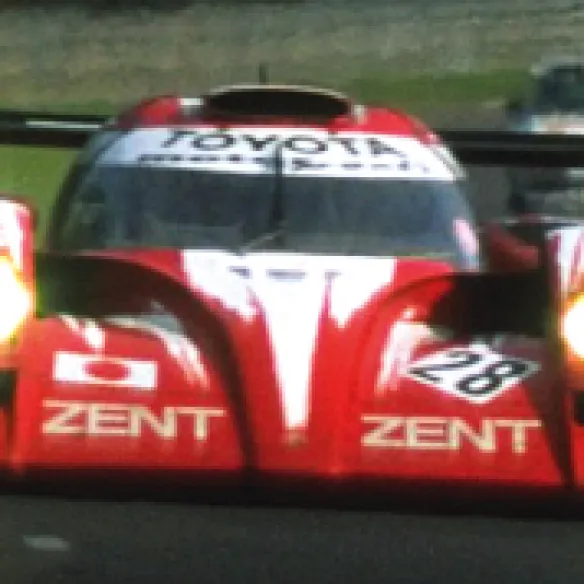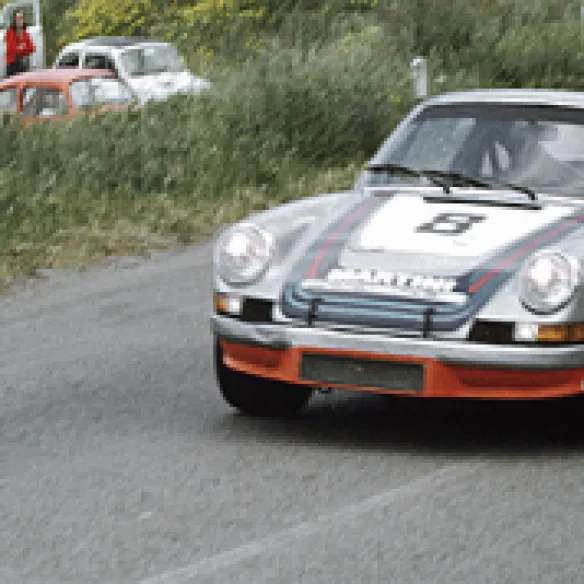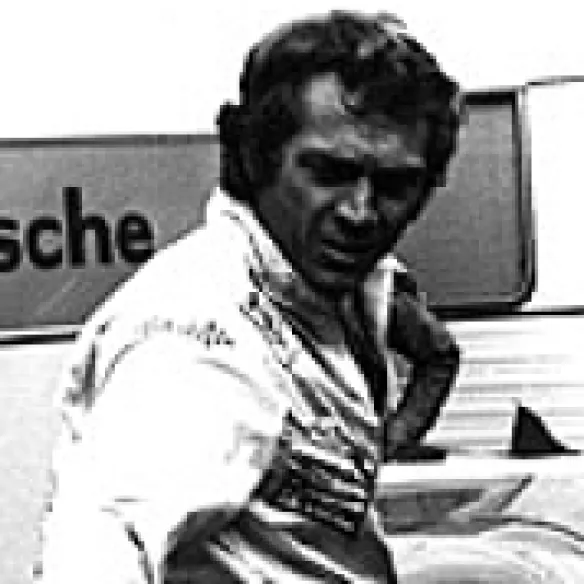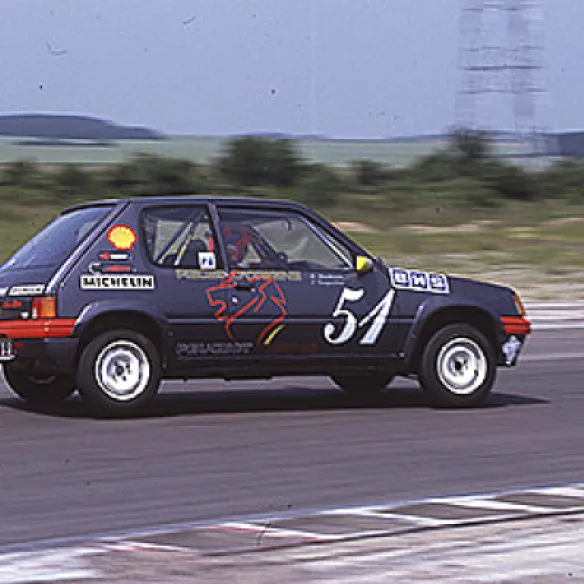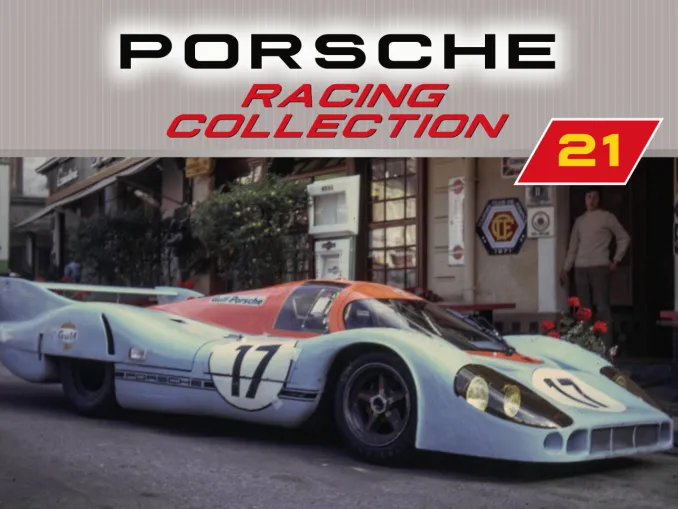
20/06/2025
Porsche 917 L - 1971
Designed for Le Mans, the long-tailed 917 tried in 1971 to improve its second-place finish from the previous year, but without success.
Read moreThe Porsche 917 had its final year of competition in 1971. As of 1972, the FIA/ACO regulations eliminated sports cars with engines exceeding 3 litres, putting an end to the career of this model and its most credible rival, the Ferrari 512. The 24 Hours of Le Mans, which was the 9th event in the world endurance championship, set a new record: three versions of the German Sport were entered for the 1971 edition, including the unforgettable 917/20 ‘’Pink Pig‘’ and the latest evolution of the long-tailed L (or LH), which was the favourite to start the race. However, due to technical problems, it failed to match the second place it had achieved the previous year, and was eventually forced to withdraw.
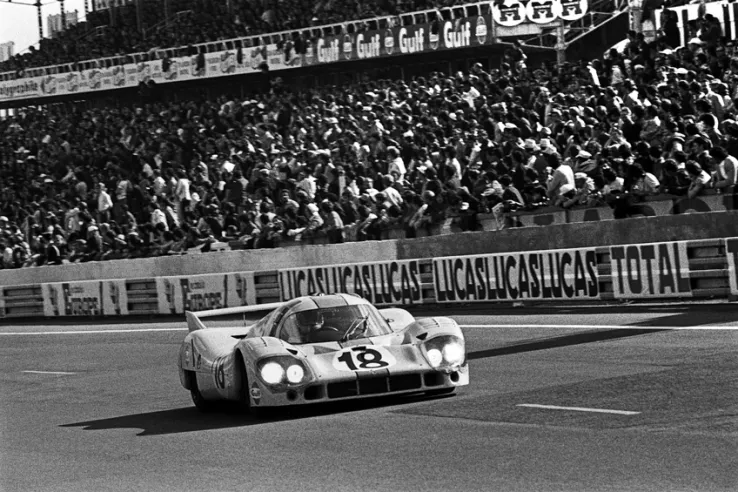
© IXO Collections SAS - Tous droits réservés.
IT'S THE FASTEST, BUT ONLY EXCELS DURING QUALIFYING SESSIONS
In 1969, the first 917 LHs (langheck, ‘long tail’), designated ‘L’ to distinguish them from the short-tailed ‘K’ versions, made their debut at Le Mans, the race for which they had been designed. The two cars, driven by the teams of Rolf Stommelen/Kurt Ahrens Jr. and Vic Elford/Richard Attwood, dominated qualifying, taking first and second place.
However, during the race, they were forced to retire due to oil loss and gearbox failure respectively. This alternation of good results during qualifying followed by poor performances in the race became a regular occurrence for the 917 L, except in 1970. That year, one of the two cars entered in the Le Mans race, carrying the colours of the Austrian Porsche Salzburg team with Vic Elford and Kurt Ahrens at the wheel, took pole position with a time of less than 3 min 20 s, before retiring with an engine problem. But a second 917L, entered by the Martini International team, also competed in the Sarthe marathon.
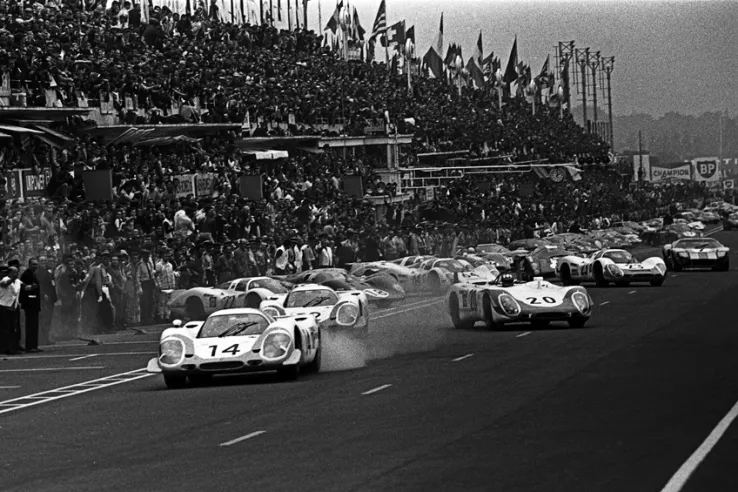
Start of the Le Mans 24 Hours in 1969: the 917 L of Rolf Stommelen and Kurt Ahrens Jr. took off ahead of a swarm of other Porsches before being stopped by a major loss of oil on the 148th lap.© IXO Collections SAS - Tous droits réservés.
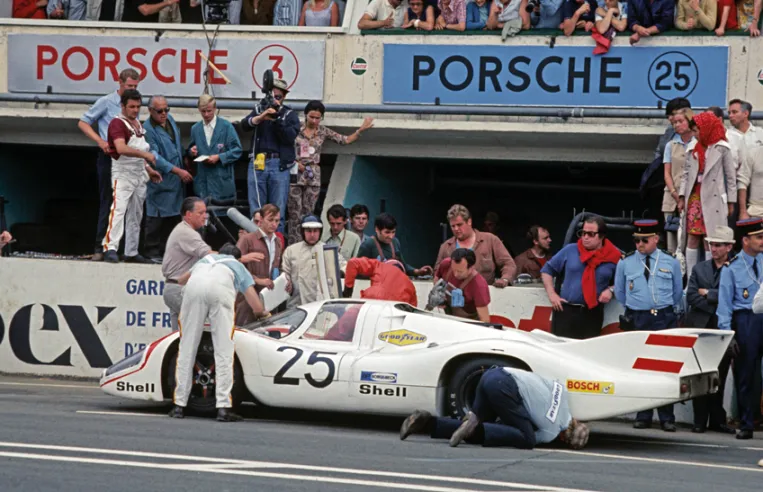
The 917 if Vic Elford and Kurt Ahrens Jr. made a pit stop at Le Mans in 1970 due to an engine problem. The twin car of Gérard Larrousse and Willi Kauhsen took second place.© IXO Collections SAS - Tous droits réservés.
IN 1970, AT LE MANS, THE 917 L CLAIMED A SECOND PLACE.
This second car, with its green and purple livery and driven by Gérard Larrousse and Willi Kauhsen, qualified twelfth. In the race, it moved up to second place behind the 917 K of Hans Herrmann and Richard Attwood. By 1971, the car had benefited from a number of improvements (including a more powerful engine) but the result was the same. Three 917s (two from John Wyer's Gulf-sponsored team and a Martini) were the fastest in practice, but none of them made it to the finish: the closest was the No. 17 of Jo Siffert and Derek Bell, in third place on the grid but betrayed by its transmission in the 18th hour of the race.
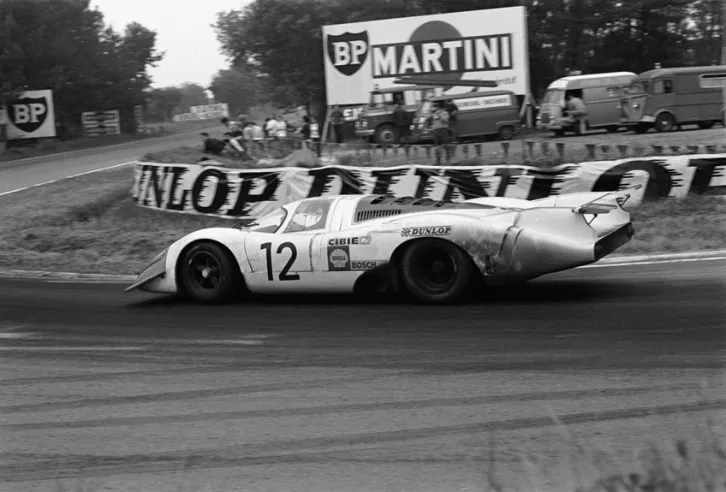
At the Le Mans 24 Hours in 1969, this was the 917 of Vic Elford and Richard Attwood, which was forced to pull out after 20 hours due to a failing gearbox.© IXO Collections SAS - Tous droits réservés.
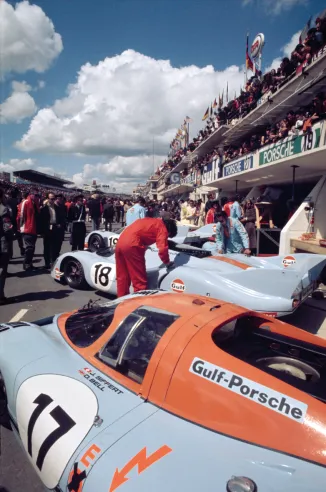
Opposite, the 917 of the J.W. Engineering team with Gulf's sky and orange livery. The team was founded by John Wyer, a former Aston Martin team director, and signed an agreement with Porsche to race the official 917s in 1970 and 1971.© IXO Collections SAS - Tous droits réservés.
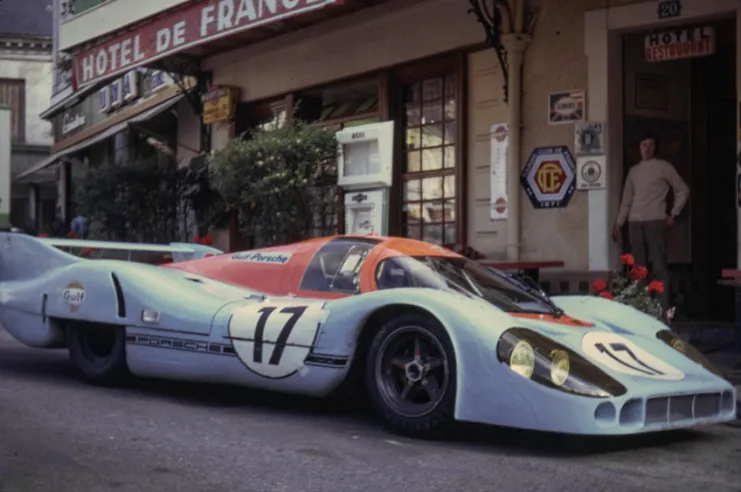
The 917 no. 17 of Jo Siffert and Derek Bell at Le Mans in 1971 came in third during the qualifying session just behind their team-mates Rodriguez/Oliver and the official Elford and Larrousse.© IXO Collections SAS - Tous droits réservés.
JO SIFFERT AND DEREK BELL
In 1971, the two drivers trying to improve on the second place achieved the previous year by Gérard Larrousse and Willi Kauhsen were two Porsche top drivers, although their experience with the 917 L was almost limited to that race. Englishman Derek Bell was to win at Le Mans on five occasions, the first in 1975 with a Mirage-Ford GR8, while subsequent successes were branded Porsche: in 1981, it was a 936; in 1982, a 956; and finally, in 1986 and 1987, a 962 C. The Swiss Jo Siffert's record of success was less rich due to his premature death while racing, but included two class wins in 1986 and 1987 with the two-litre, six-cylinder Porsche 906 and 907.
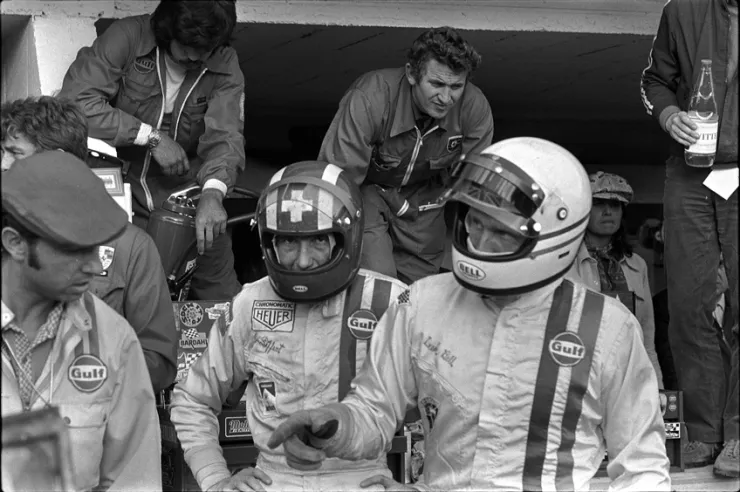
Above, Jo Siffert (left) and Derek Bell standing in front of the J.W. Engineering team stand at the 1971 Le Mans 24 Hours, which resulted in the withdrawal of their 917 L. © IXO Collections SAS - Tous droits réservés.
Technical sheet
Recent articles

19/06/2025
Porsche 906 Carrera 6 1966
Having only just been homologated for sport, the german six-cyliner won the Targa Florio for a private team, beating its ‘official’ sisters
Read more

19/06/2025
Porsche RS Spyder - 2008
Designed for the junior LMP2 category, it is able to beat the big boys.
Read more
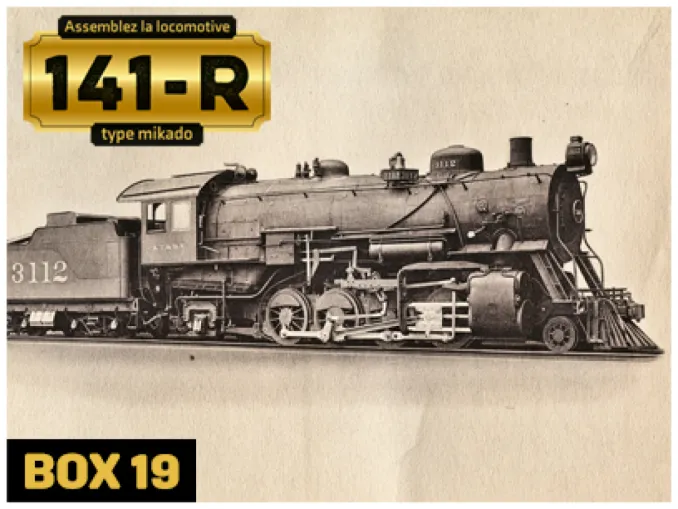
11/06/2025
THE 141-R: LOCOMOTIVE IN TWO “BATCHES”
On 5 October 1944, the first French mission went to the USA and received propositions from the American manufacturers, (...)
Read more


 English
English français
français Deutsch
Deutsch español
español italiano
italiano português
português